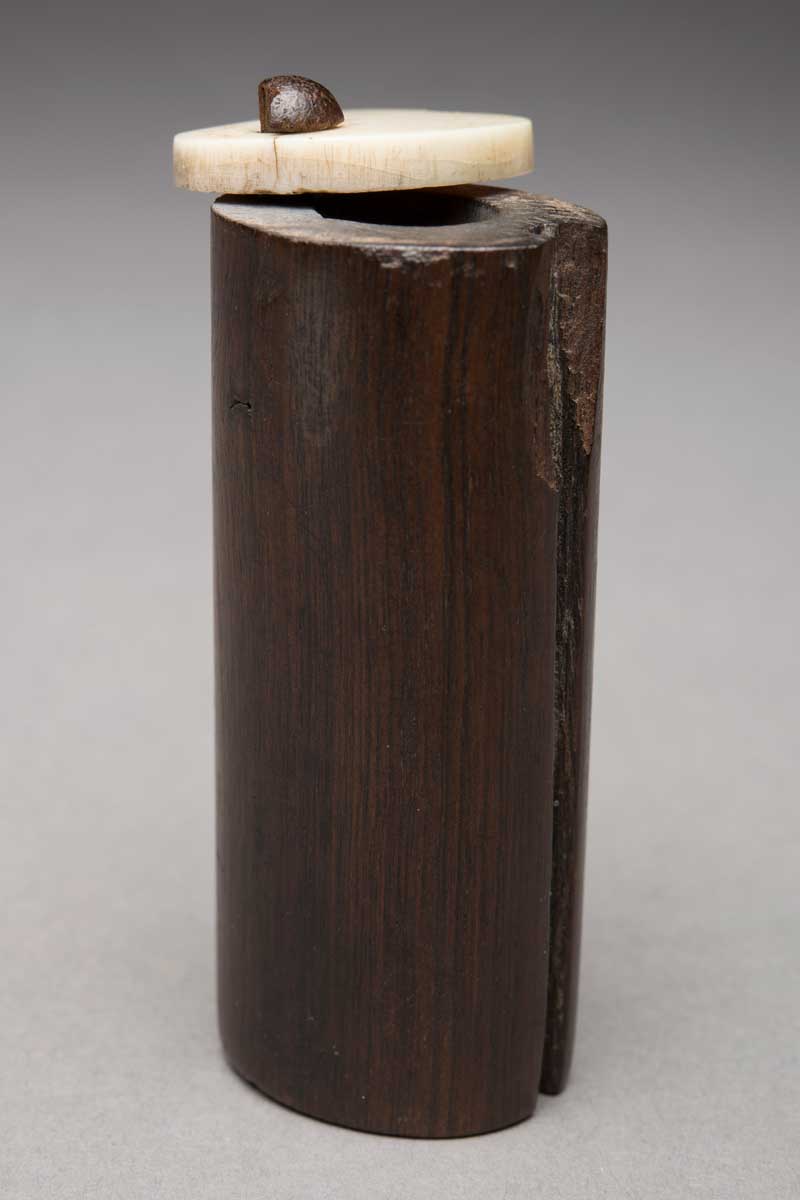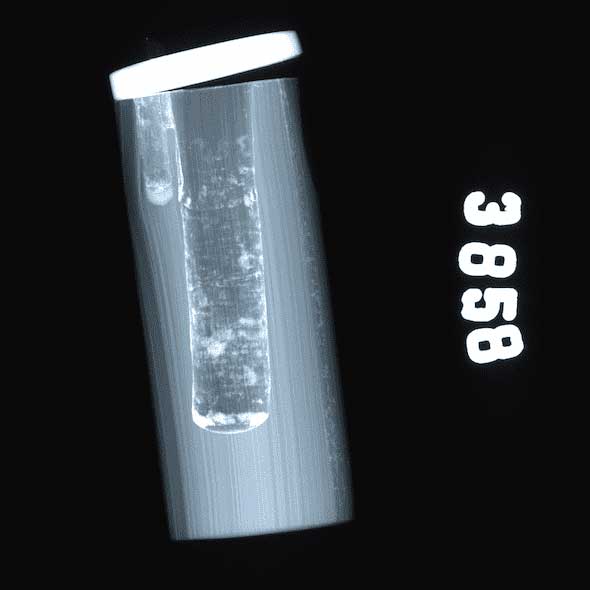Providing for the Afterlife: Ancient Egyptian works from Eton College
Wood and Ivory Kohl Tube
By Meg Swaney, Monica Herrera, Sanchita Balachandran and Skylar Hurst

Description
This kohl tube takes the shape of an elliptic cylinder with a groove extending the length of one of its sides for storing a small wooden cosmetic applicator (not exhibited). The dense, dark brown wood (likely ebony) is well-preserved, and its surface has a glossy sheen. The interior of the tube has a deep, cylindrical opening for storing ground minerals used for cosmetics. The top of the tube features a wooden, circular knob that supports an ivory swivel-lid. The lid mirrors the elliptical shape of the tube and also features a small semicircular cut that aligns with the side-groove. When inserted into this groove, the applicator would have held the swivel-lid in place. The black kohl (eye-paint) contained in this tube was worn by men and women and had both cosmetic and medicinal applications. Its dark color helped to reflect the glare of the sun while its lead content repelled flies and was fatal to the small organism that can cause eye disease and blindness. Because of the large amounts of standing water from the Nile and irrigation canals, eye diseases born by flying insects were a common problem for the ancient Egyptians.
Technical Research
As studied by undergraduates Monica Herrera and Skylar Hurst, this kohl tube is made of a highly dense wood, possibly ebony. An x-ray shows how the wood was drilled in order to create a tubular compartment which is still partially filled with a more dense material that appears bright white in the image. Scrapes and scratches in this dense material suggest that it was removed from the tube interior, as one might remove kohl with an applicator stick. Portable x-ray fluorescence analysis shows the presence of the heavy metal lead on the inside of the tube, which is both radio-opaque (i.e., appears white in x-rays) and is the primary component of kohl. A swivel top lid is attached to the top of the body of the tube with an inserted wooden peg. Based on the cross-hatched Schreger lines visible on the lid when viewed with a stereomicroscope, this material is elephant ivory.
